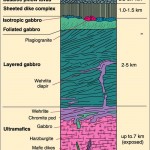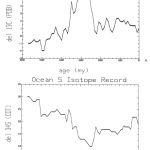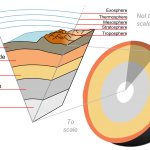Long viewed as a cold dead rock devoid of lava for a billion years, new evidence suggests that the moon could have seen small surface flows as recently as 20 million years ago. Twenty million years might not seem recent, but considering the moon and earth both date around 4.5 billion years old, 20 million years represents 0.4% of its age, or what 5 months is to a 100-year human lifespan. In that sense, the new findings are like discovering the moon was alive 5 months ago!
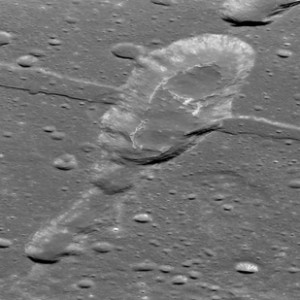
With few craters, Sosigenes (3 × 7 × 1 km), could have formed only 18 million years ago! Image credit: NASA/GSFC/Arizona State University
The study, published this month in Nature Geoscience, used photographs from the Lunar Reconnaissance Orbiter, a NASA robot orbiting the moon, to investigate 70 irregular mare patches—including 54 previously unknown ones—which are small basalt plains (lava flows) that average less than 500 meters across and so can't be seen from Earth, making them difficult to detect.
The method they used to date moon rocks is based on crater size-frequency distributions. The theory goes that the more craters, the older the rock; a freshly hardened lava flow just hasn't had enough time to be bombarded. Therefore, by counting craters in moon rocks of known age (by radiometric dating), quantitative models were developed that allow one to estimate age based on crater frequency.
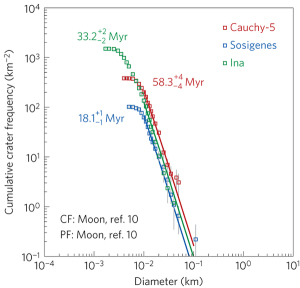
Ages of lunar features can be calculated from crater size-frequency distributions. From Braden et al. (2014).
Since we can see craters using telescopes and satellites, these models allow us to date features of the moon without needing to physically possess lunar rocks, which are incredibly rare and expensive to collect. Consider that the six Apollo landings together cost $109 billion (after adjusting for inflation) and returned 382,000 grams of moon rocks (and soil)—that amounts to $285,340 per gram of moon rock! Compare that to the price of gold and diamonds, which respectively cost $50 and ≳$50,000 per gram. (Of course, the missions involved more than collected rocks, so the entire cost can't be chalked up to the rocks; in 2011, a federal court determined the actual cost to be $50,800 per gram.)
Braden, S. E., Stopar, J. D., Robinson, M. S., Lawrence, S. J., van der Bogert, C. H., & Hiesinger, H. (2014). Evidence for basaltic volcanism on the Moon within the past 100 million years. Nature Geoscience.

